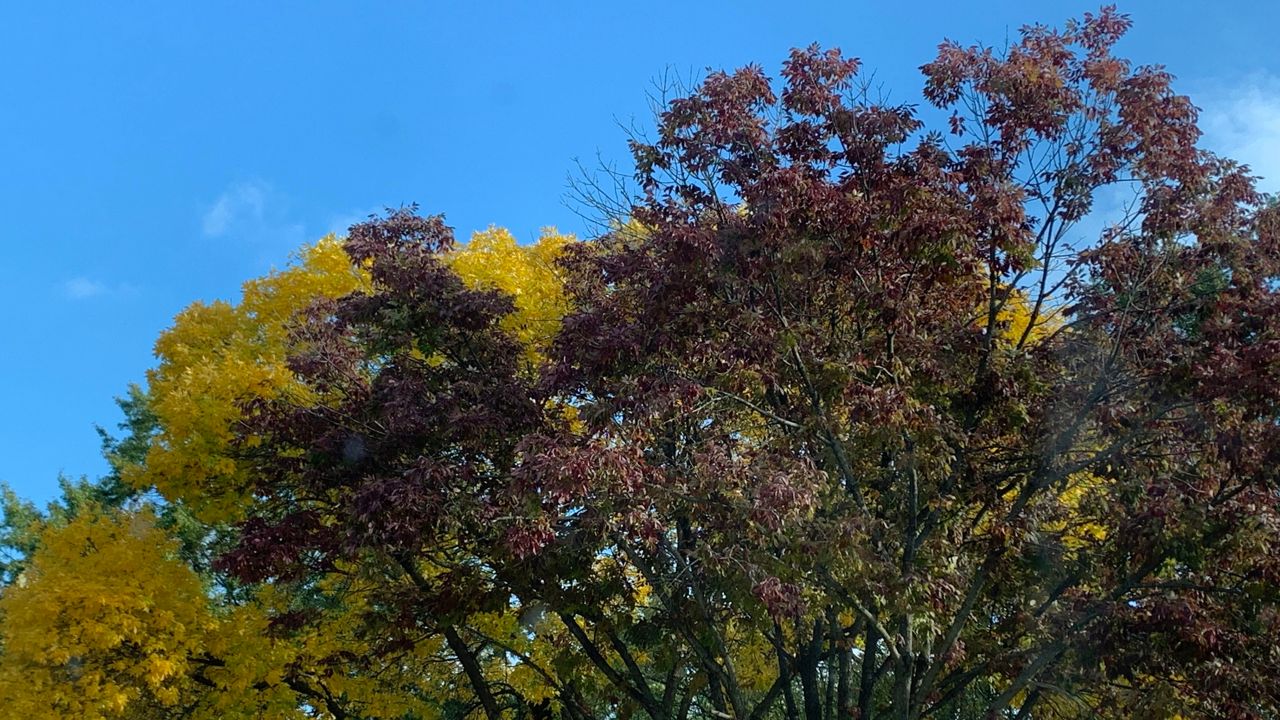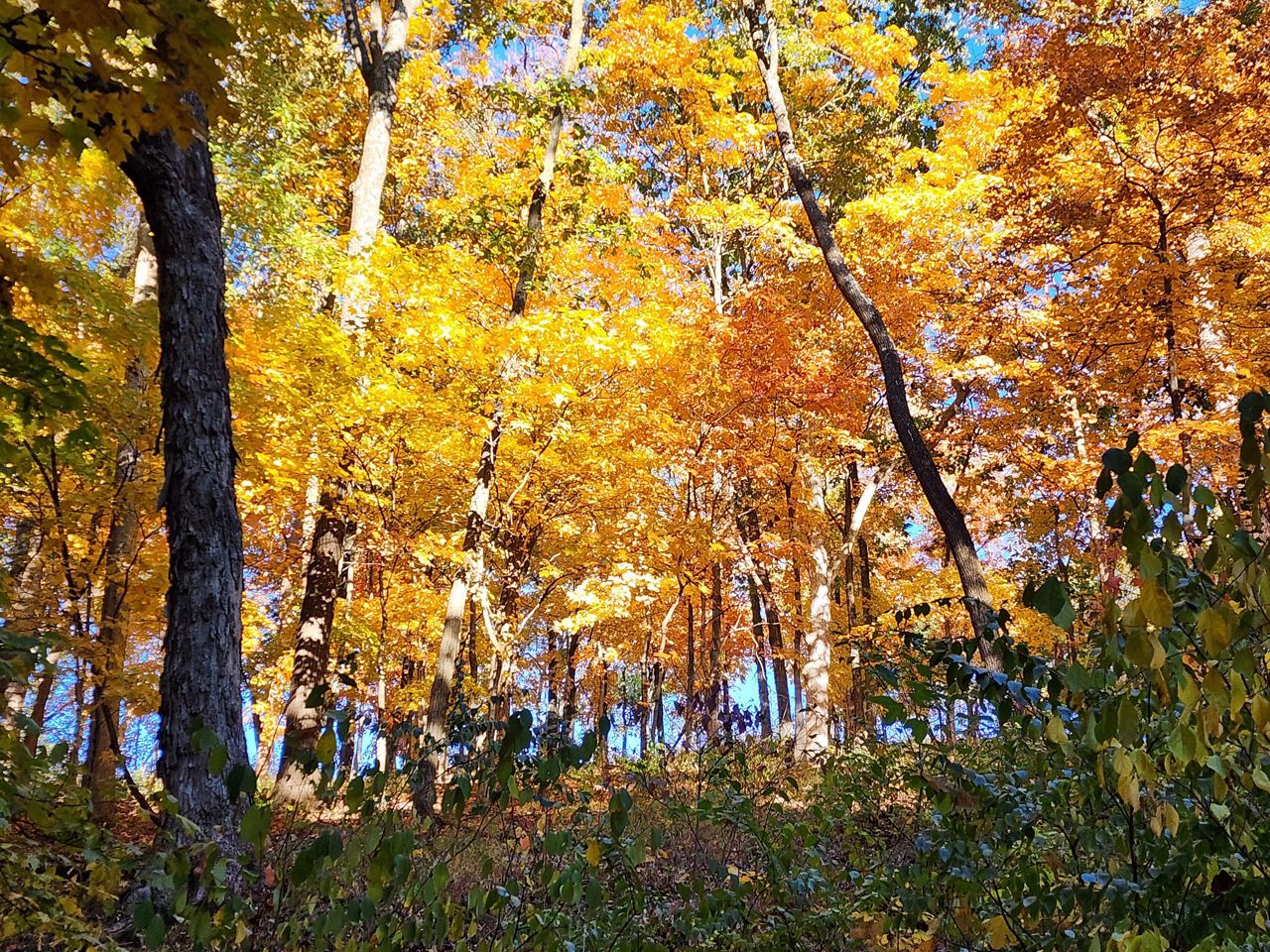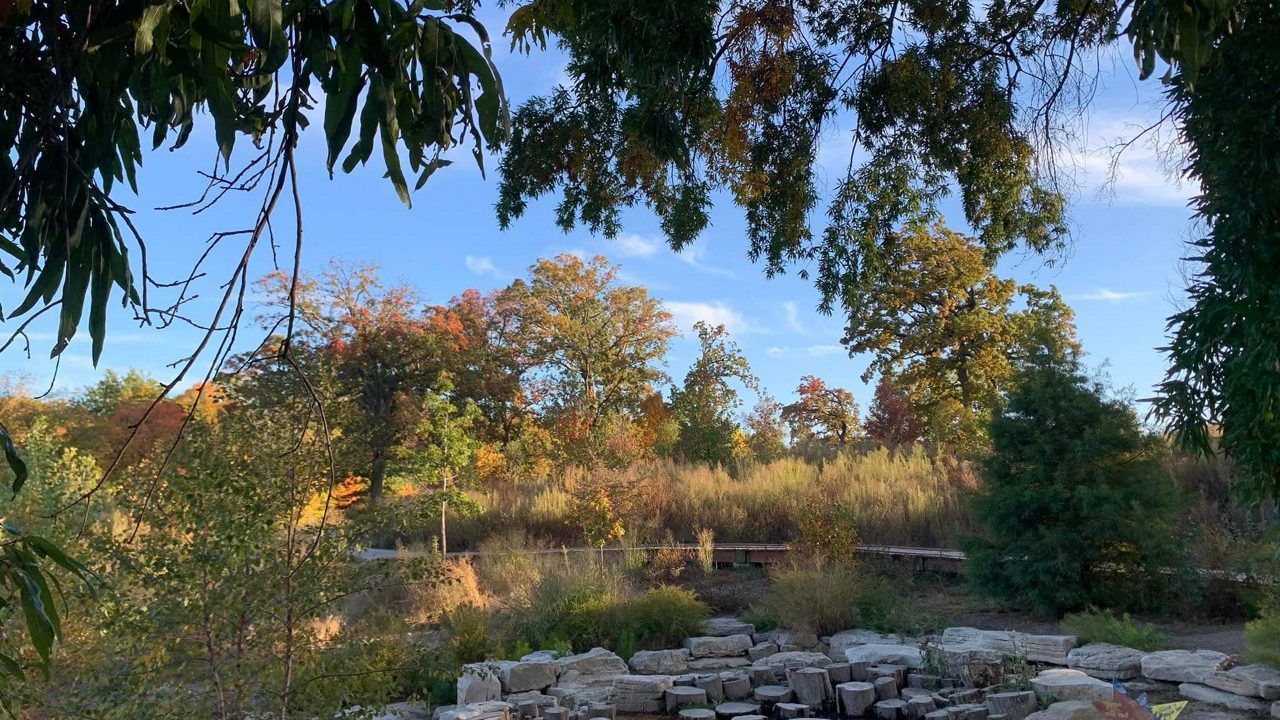Driving around town, you’ll notice the colors of the trees are becoming more vibrant. The yellows, reds and purples are on full display.
This is on track with typical full coverage fall foliage in St. Louis. The area sees widespread colors around mid-to-late October.
During the spring and summer, leaves on trees appear green. That’s thanks to a pigment called chlorophyll. Trees capture sunlight through chlorophyll and turn that sunlight into energy or food via a process called photosynthesis.
During photosynthesis, the trees convert carbon dioxide and water from the air into glucose or sugar. The trees use the glucose and other nutrients from the soil to grow and maintain their leaves.
The appearance of the green is because chlorophyll does not absorb the green wavelengths in the visible part of the electromagnetic spectrum. It gets reflected, thus, appearing to our eyes as green.
Yet, why do the leaves change color during fall?
Mark Grueber, Community Forester with the Missouri Department of Conservation, explains that although the popular belief of why leaves change colors has to do with temperature, that’s only part of it. “It’s actually the shortened day length that has to do with it.”
“As the day length gets shorter, the green pigment (chlorophyll) in the leaves starts to break down. Once that day length gets so short that the leaves can’t create as much energy as they are going to expend it for the year.”
He adds, “so that green pigment breaks down and reveals colors like yellows and oranges that are always there but are hidden by that green pigment.”
Driving around my neighborhood, some of the prettiest trees are the purple and red ones. Grueber explains that this happens because of a unique process.
“The reds and purples are actually energy in the form of sugars that get produced but trapped in the leaves.”

As for whether a drought can affect the leaves. He says there’s no clear signal. Some years, despite dry conditions, trees have still produced bright vibrant colors.
The cold air is what really makes trees respond. No frost or freeze has occurred yet in St. Louis, which is why this year’s foliage may seem later than in previous years.
During times of cold weather, Grueber explains, “Some trees just turn brown and drop their leaves because that’s their defense mechanism.”
However, oak-dominated forests, which are quite dominant in this region, handle a hard freeze better than other species of trees, so they are likely later to change.
This fall has been a warm season but with a pattern shift likely to occur next week, if the region experiences a hard freeze, some of the later turning leaves will go from a green to a brown and fall off the trees.
For those peepers who want to take time and view the colors, Grueber recommends staying close to the city, where it’s warmer because that color change is going to happen later.

He suggests a few parks for optimal viewing, including Powder Valley, Rockwood Reservation in Wildwood and Cuivre River State Park in Troy.
As for how long the colors will stay? He says it all depends on the temperatures. Freezing temperatures will shut it down pretty quickly.
To see how colors are progressing, check out the Missouri Department of Conservation leaf status website.
Our team of meteorologists dives deep into the science of weather and breaks down timely weather data and information. To view more weather and climate stories, check out our weather blogs section.




